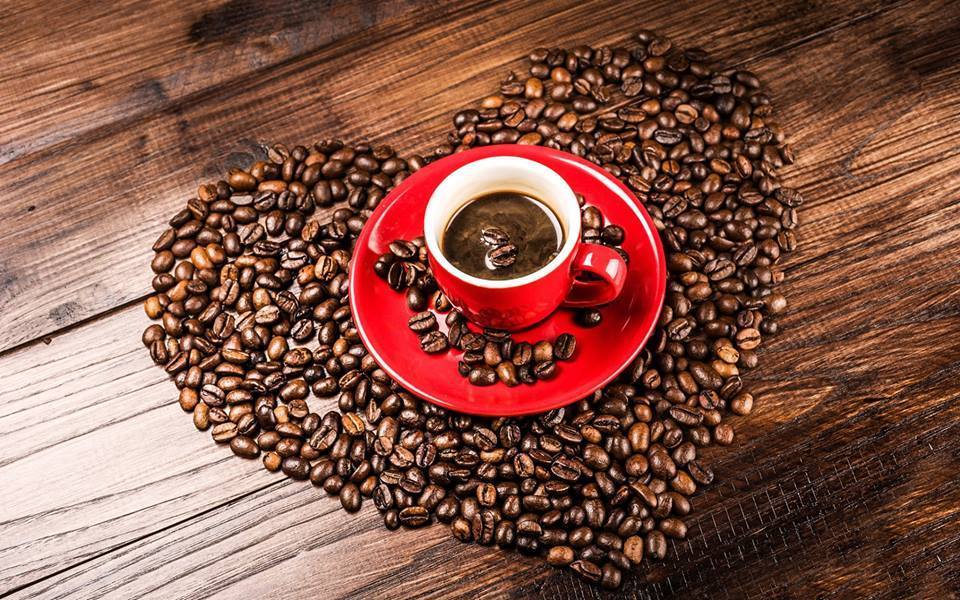I know… I know… you’re dying to sip it at least once. I agree and totally understand you. Still, I have a question. Do you want to sip… just for the sip of it… or do you want to do it while your whole being feels the pleasure that only an AWESOME cup of coffee can give you? I’m talking “a very good quality cup of coffee… not the average kind”.
If your wish is only for the run-of-the-mill cup of coffee, than do not read the following lines. Contrary, if your desire is oriented towards quality instead of quantity… find the secrets of preparing a perfect coffee AFTER you discover which coffee you should choose.
AMAZING COFFEES OF THE WORLD
- African coffee
- Ethiopian coffee
- Ethiopia is considered the birthplace of coffee.
- Growing regions: Yergacheffes (floral and citrusy), Harrar (jammy and wild), Sidamo, Limmu, Djimmah, Lekempti and Bebeka.
- Harvest time is November-February.
- Kenyan coffee
- It is a coffee full of power and character and is known for its majestic qualities.
- Growing regions are Mount Kenya, Kasii, Nyanza, Nakuru, Kajiado.
- The harvest times: November – March.
- Tanzanian coffee
- It is very soft and clean. It is the peaberry type.
- Growing regions are Mount Kilimanjaro, Hight Plateaus between Lake Nyassa and Tanganyika.
- Harvest times: November – February.
- Uganda Coffee – Bugishu
- It is similar with Kenyan coffee, bold and powerful but has a bit less body.
- It is cultivated on Mt. Elgon, a volcano between Uganda and Kenya.
- Zambian coffee
- Similar with the Kenyan coffee and at the same time contains Tanzanian notes. This coffee is the less acidic African coffee.
- Cultivating regions: the Northern District of Muchinga Mountains, near Lusaka.
- Zimbabwe coffee
- It has excellent acidity, medium body bean and a soft touch of black pepper. Due to civil strife and land reforms, this coffee is seen less and less.
- Yemen coffee
- It is one of the oldest and highly praised coffees.
- It’s a bit expensive but it’s worth it.
- Known also as Arabian Yemen Mocha.
- Indonesian coffee
- Sulawesi coffee or Celebes Coffee
- Very similar with Sumatran coffee.
- It is a full bodied, low acid, earthy coffee.
- Growing region: Torajaland.
- Harvest time: May – November.
- Java coffee
- It is a bright and clean coffee.
- Growing regions: Eastern, Central and Western Island of Java.
- Harvest time: June – October.
- Sumatra coffee
- It is known for its heavy body, low acidity and syrupy, chocolaty after-tones.
- Growing regions: Laut Tawar Lake, lake Toba, Lintong Nihuta, Sumbul and Takengon.
- Harvest times: October – March.
- Papua New Guinea coffee
- It is a mellow and aromatically complex coffee with an apple flavor.
- It has moderate acidity and broad flavor.
- Growing regions: Highlands and Morobe.
- Harvest times: May – August.
- Timor coffee
- It is a full body, smooth, sweet and cocoa-flavor coffee.
- Growing region: Indonesian island of East Timor.
- The production for this coffee was almost destroyed by sectarian and political conflicts.
- Central and South American coffee
- Brazilian coffee
- It has a soft, nutty, low acid and bittersweet chocolate taste.
- Even if Brazilian coffee is 40% of the world’s production, it is not a high grade coffee and it is more “commercial”.
- The flavor is not a concern but rather the bulk and price.
- Still there are some very good quality Brazilian coffees out there.
- Growing regions: Minas Gerais, SaoPaulo, Espirito Santo, Rio de Janeiro, Bahia, Goias, Rondonia and Parana.
- Harvest times: May – August.
- Colombian coffee
- It is a mild and sweet aromatic coffee.
- Growing regions: Magdalena, Medelin, Bucaramanga, Popayan, Huila and Narino.
- Harvest times: September – January (main) and March – June.
- Costa Rican coffee
- It is one of the world’s finest coffees.
- It grows amazingly in volcanic soil.
- It is a very bright and clean coffee.
- Depending on the growing region, the cup has subtle but distinct differences.
- Growing regions: Tarrazu, Volcan Poas, Tres Rios.
- Harvest times: October – March.
- Guatemalan coffee
- It is one of the most amazingly aromatic, full bodied and rich in flavor coffees.
- The cup offers a smoky, complex cup.
- Growing regions: Hue Hue Tenango, Atitlan, Antigua, Coban and San Marcos.
- Harvest times: October – March.
- Mexican coffee
- It has a light to mild sweet flavor with medium body and a pleasant dry acidity snap.
- Growing regions: Chiapas, Oaxaca, Veracruz and Coatepec.
- Harvest times: October – March
- Panamanian coffee
- It has variety of tasty blends.
- Growing regions: the forested mountains of Boquete.
- Harvest times: November – March.
- Peruvian Coffee
- It has a bright effervescent sweet snap with a medium body.
- Growing regions: Chanchamaya and Cuzco.
- Harvest time: November – March.
- Caribbean coffee
- Jamaican Blue Mountain coffee
- It is a distinctly sweet aromatic coffee with fruit-like flavors.
- It is the highest priced coffee in the world (20 times higher than the regular coffee).
- If you buy Jamaican Blue Mountain coffee at a lower price, it means you are not getting the original, because you will never get a discount from Jamaicans.
- Worth the price? Well… it’s a matter of personal taste.
- Harvest times: January – March.
- Puerto-Rican coffee
- Known as Yauco Selecto, is one of the world’s top coffees.
- It has a full bodied, sophisticated flavor, rich, almost sweet coffee.
- Even if it’s comparable with Jamaican Blue Mountain and Kona coffees, its price is lower because it is not so well known.
- Kona coffee
- It is a very balanced, clean, mild, mellow Hawaiian coffee.
- Growing regions: Kona, Kauai, Maui, Molokai and Oahu.
- Harvest time: November – March
- Indian coffee
- It is a low acidity, medium to full body and salty subtle spiced coffee.
- It is an unusual coffee and you have only two choices if you taste it. You either love it or hate it. There is not a middle option.
- Growing regions: Karnataka, Mysore, Kerala, Malabar and Tamilnadu.
- Harvest times: December – March.
SECRETS FOR PREPARING AN
AMAZING COFFEE AT HOME
-
The first thing that you must always keep in mind… choose only high quality coffee beans. Before any coffee is sold, it is classified by the number of defects, screen size and cup quality. However, coffee grading criteria are different around the world. Therefore, even if the grading is a tool for determining the quality of the coffee beans, still, the true test seems to depend only on the consumer’s taste. The proof of a high quality coffee is always in the cup, therefore choose your favorite one and never lower your standards.
-
Never use distilled water for brewing your coffee because it lacks minerals which help in bringing out the coffee’s natural flavors. Use bottled water or cold water from your tap. Never use the hot tap water for brewing your coffee.
-
The “Perfect Cup” is buying your coffee whole bean and grinding it yourself just before brewing.
-
Never, never, never keep your coffee in your fridge thinking that you’ll keep it fresh. It will ruin the oils. If you have a quantity that can’t be consumed within two weeks, than freezing it can be an option. But don’t expect the coffee to have the same taste after de-freezing. If you must do it, take care to: store your coffee in the original packaging. Put the pack in a sack that will keep out the light and draw the air with straw. Coffee should only be frozen once.
-
If you want to taste the beans more rather than the roast, choose light to medium roast. In this way the flavors of the beans are maximized.
-
After you open your coffee packaging, drink it within a week or two.
-
Keep the opened coffee in an air-tight container, in a cool, dark place.
-
Not many people know that the way you grind your coffee affects the taste very much. Therefore, invest in a good grinder. The best are the conical burr grinders. The inexpensive blade-grinders heat the beans and chop it into varying sized pieces, affecting the taste in a negative way.
-
Use the perfect coffee to water ratio. Since this is a matter of personal taste, determine your favorite ratio and keep it constant. For a normal cup, usually the perfect coffee quantity is of two teaspoons. My taste is of one to one and a half, so this is the perfect ratio for me.
-
Don’t boil your water. It will give a bitter taste to your coffee. The best temperature is between 195º – 205º Fahrenheit.
-
Steep your coffee for at least 4 minutes.
-
Clean your coffee maker often, to remove any minerals deposited from the water’s heating.
-
Finally, you have to remember that what you like represents the “perfect coffee” for you. Therefore, no recipes can advise you of what is perfect. Try your own method and decide what is best for you.
 How To Reach Your Writing Goals Like A Pro
How To Reach Your Writing Goals Like A Pro















Once I started using a French Press to make the coffee, I have never gone back to a coffee maker. It’s just not the same.
Coffee makers, especially ones with filters (yes, even the gold filters) change the flavor of the coffee.
I don’t add anything to coffee, except a tiny pinch of cardamom in the grounds before steeping. I prefer it black. When you drink it black, even the subtlest changes in flavor are immediately evident.
The only thing I have found that will preserve the intended flavor is a French Press, preferably a metal one with a thermos lining so the coffee doesn’t lose heat during the steeping process.
Great tip about the water temperature! We use a Zojirushi water dispenser that keeps the temperature at a constant 195 degrees, so water is always immediately available to go into the grounds!
Thank you for your add, Ed! 🙂
On my first visit to Israel, I learned a new method for preparing the coffee. It is totally different than what I used to do and it is similar with using your French Press but without having a press. You are right… I could never go back to my old habit… it’s just not the same.
A really informative blog, I have a good friend who runs her own coffee shop in a town not far from me. Her coffee is to die for as she blends it all herself and you can really tell the difference.
Thanks for stopping by, Mike! Your description is soooo good that I almost feel the need to jump on an airplane on my way to your friend! I can easily relate with… “Her coffee is to die”. Will you check the time for me, Doc? 🙂
Wow Ive never knew there was that much coffee out there- Id better make another cup
Thanks for stopping by, Paul! 🙂 I have to admit that I also didn’t know this, before doing the research. I used to drink Brazilian coffee until now. I had no idea is almost the lowest grade from the market. Today I plan to buy some different sorts… except Indian coffee. This I tasted while being in India and I didn’t like too much. Has a “mud” taste 🙂